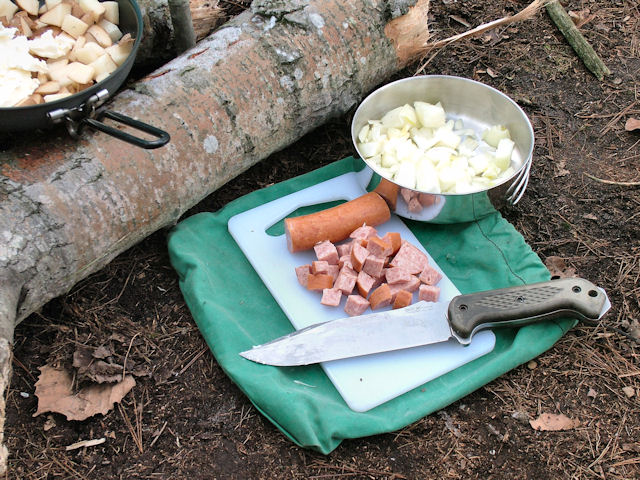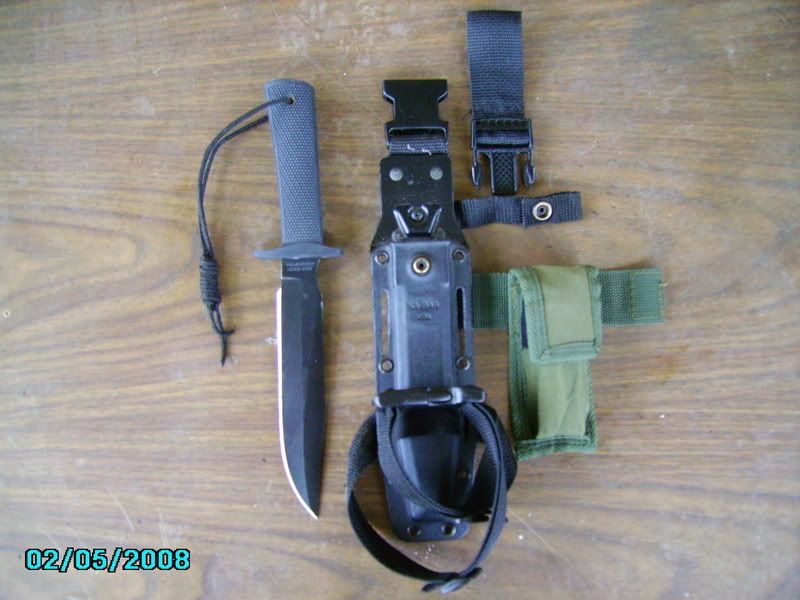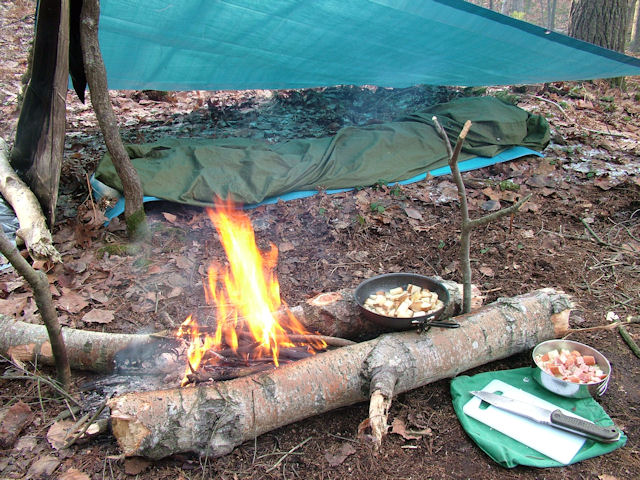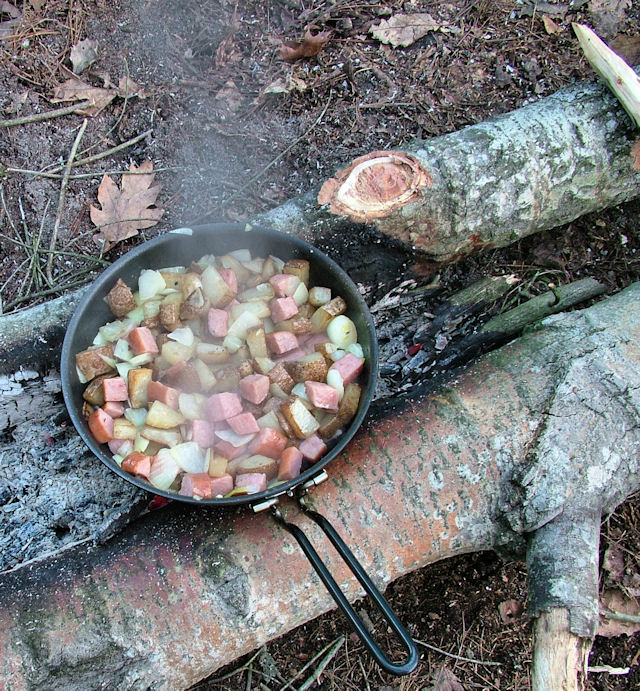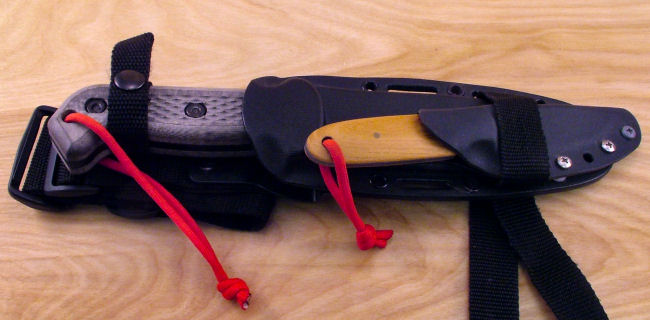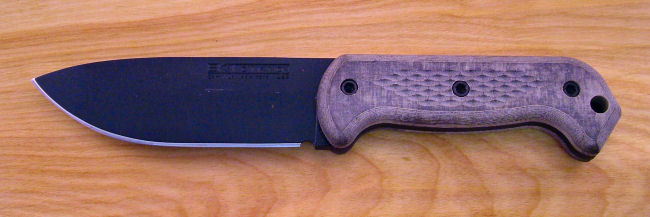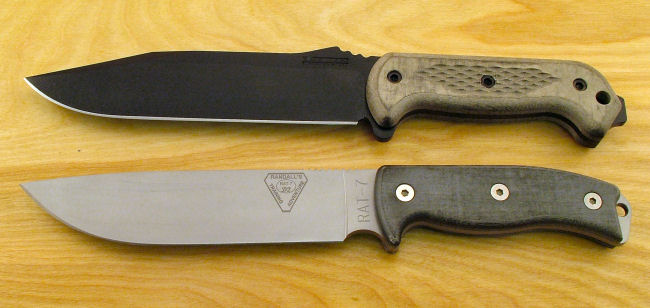Ok, we have already established that I tend to like larger knives for my outings. Sometimes I like to travel very light because I may be bringing some heavy things back out with me…stones, burls, fossils, bones, petrified wood, or just odd pieces of wood….I never really know. And that, having been inspired by the UK approach to bushcraft, I am also working with some smaller knives….The following review is a work in progress involving a combination of knives in one sheath that are polar opposites. However this is another one that will likely appeal more to the military personnel or those who will be traveling through some very serious bush away from towns.
This is the Becker BK7 made by Ka-Bar knives. It has in the sheathe with it, a little knife, the BK13. Because of all the rains I haven’t done a lot with the BK13, I will be working more with it this next weekend or perhaps in the evenings.
The BK7 has an over-all length of 12.5 inches or 31.75 cm, a blade length of just over 7 inches or roughly 18 cm tip to handle, and it is 1.62 inches or just over 4 cm at the spine area between the thumb ramp and the swedge.
This is how it comes…
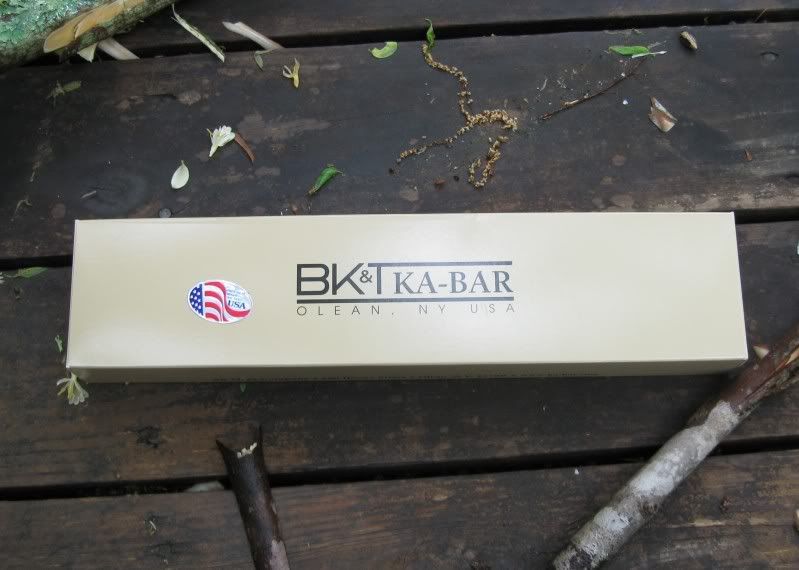
It is a full tang design with the Grivory (not sure what that is yet) handle scales held on by three 5mm socket head bolts. It has a protruding tang that looks to be great for tasks such as breaking glass or plexi-glass, cracking skulls, or even batoning into ice to make a hole or gather ice to melt for water. The handle fits my hand near perfectly. I get a great grip in the conventional grip, the reverse grip, and in a rearward hold.
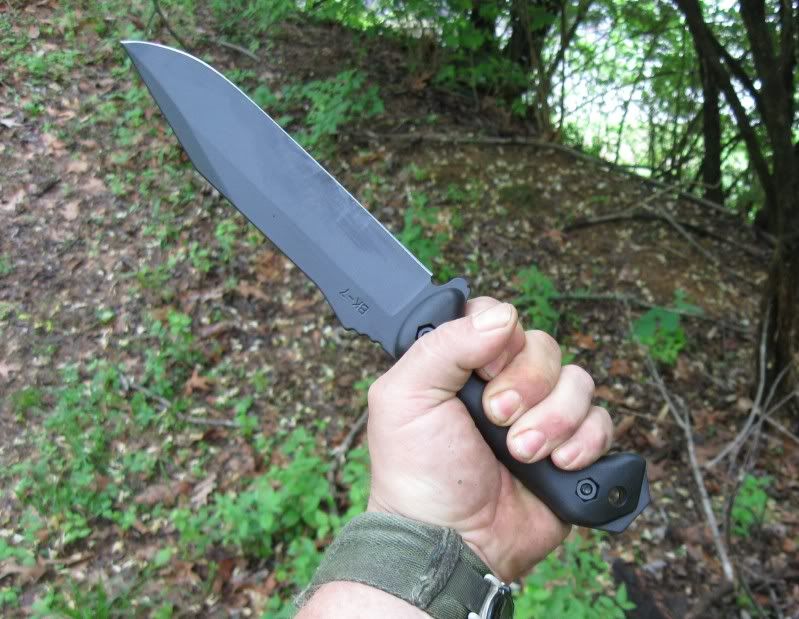
The sheath is made of Cordura and has multiple attachment points for carry options. It comes with a small utility blade included, and it also has a great cargo pocket that is a lot larger than most. The retention strap securely holds the knife in place and allows very little movement.
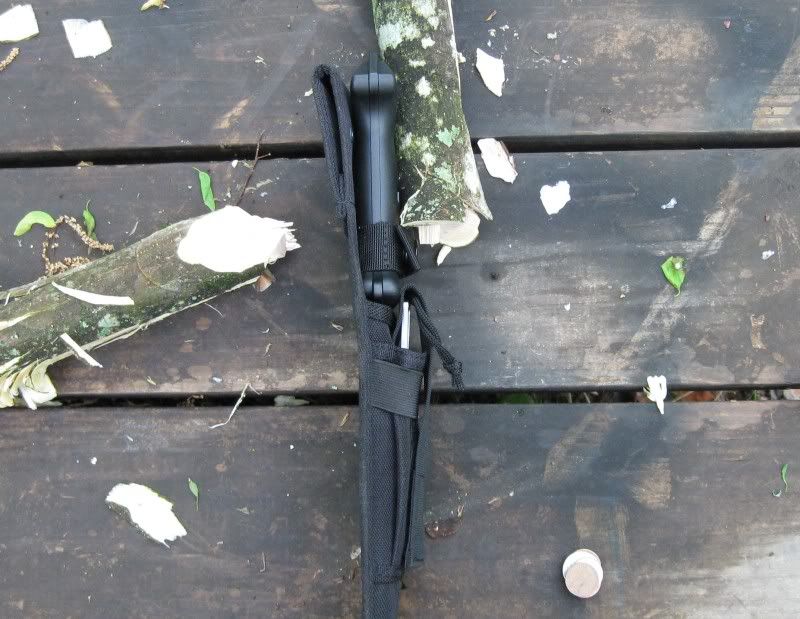
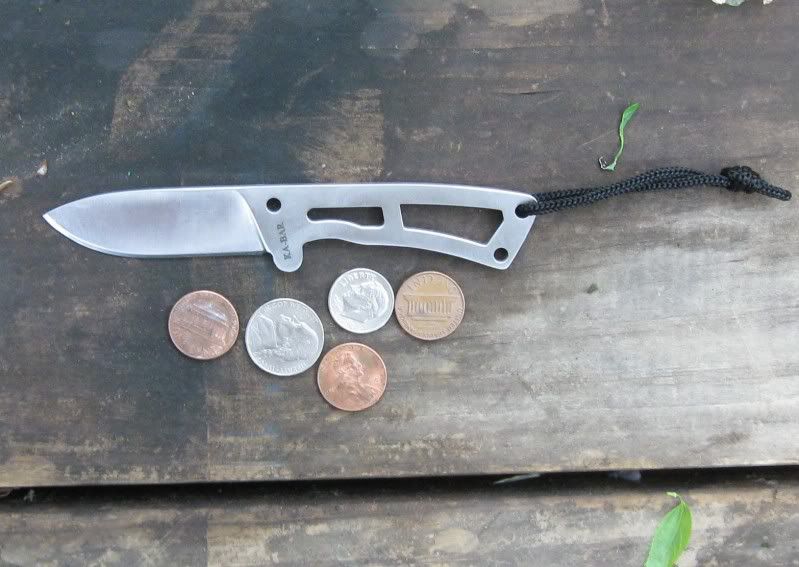
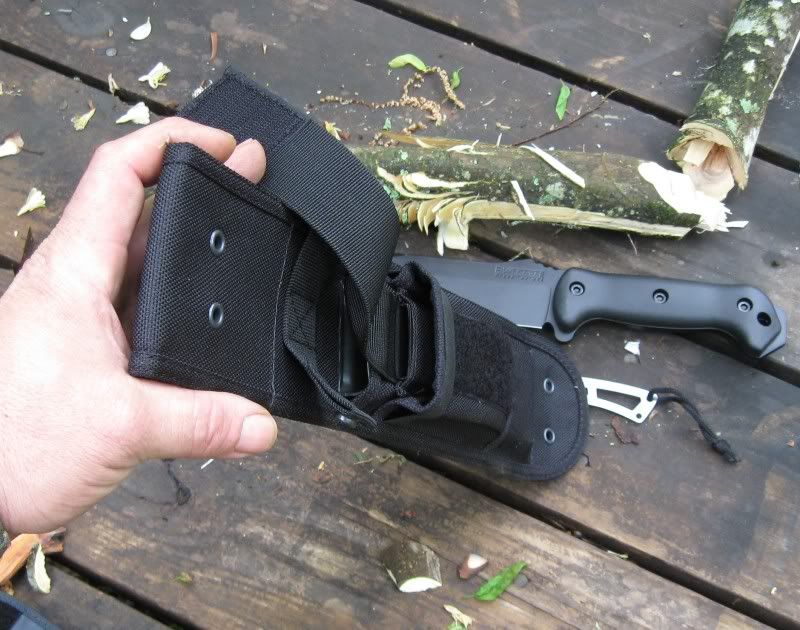
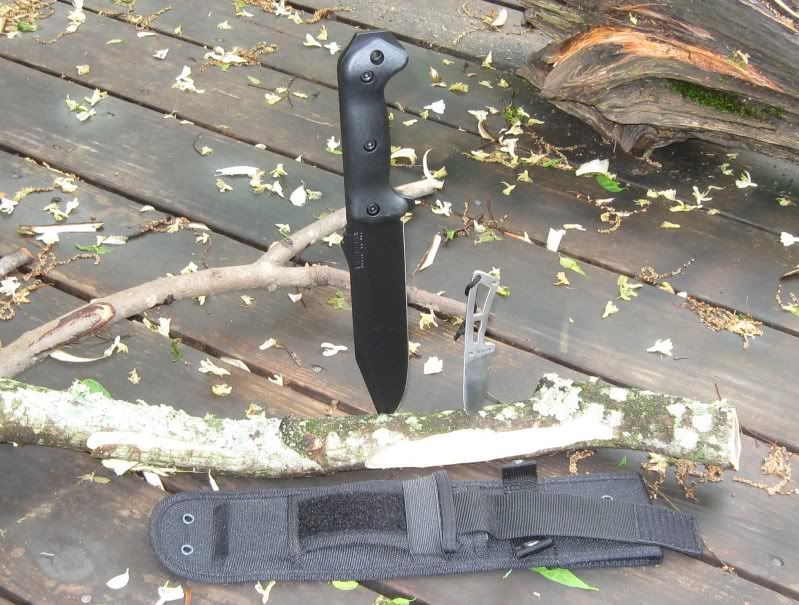
The cargo pouch is large enough that besides the BK13, which has it’s own sheath inside the pouch, it will also hold a multi-tool, a magnesium firestarter, and an Army model Swedish fire steel. I could haven gotten a few thinner things into it such as sticks of fatwood if I’d thought about it. It has an elastic webbing band around the opening to allow the pocket to expand and contract as need which also serves as a good place to tie off the firesteel and firestarter to secure them in place.
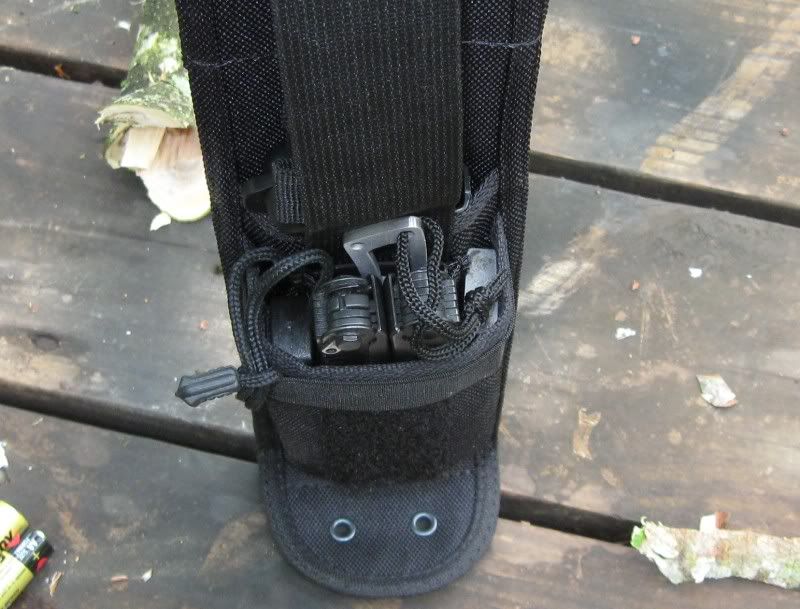
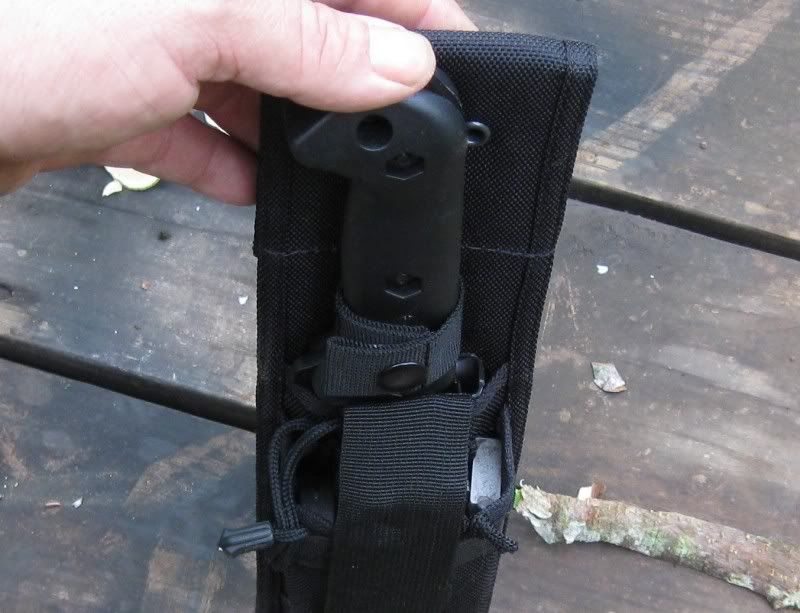

The knife comes shaving sharp…
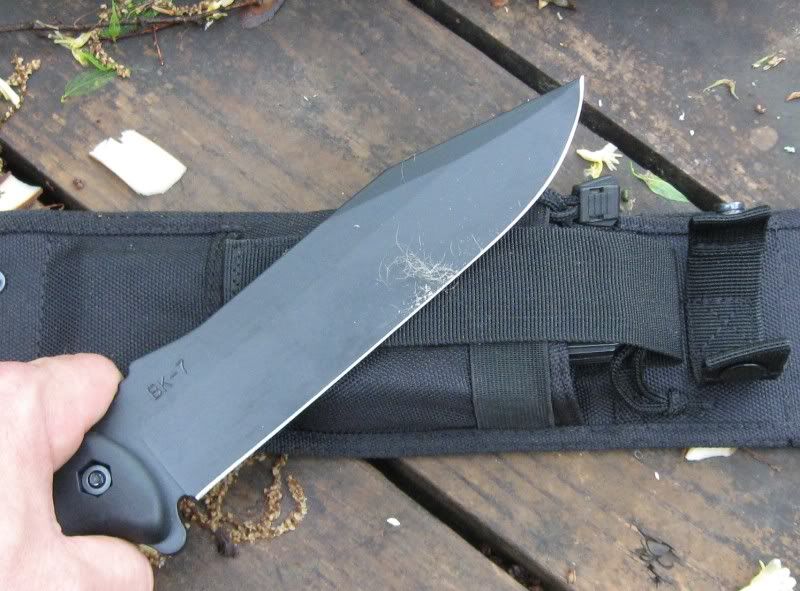
and had no trouble whittling thin shavings.
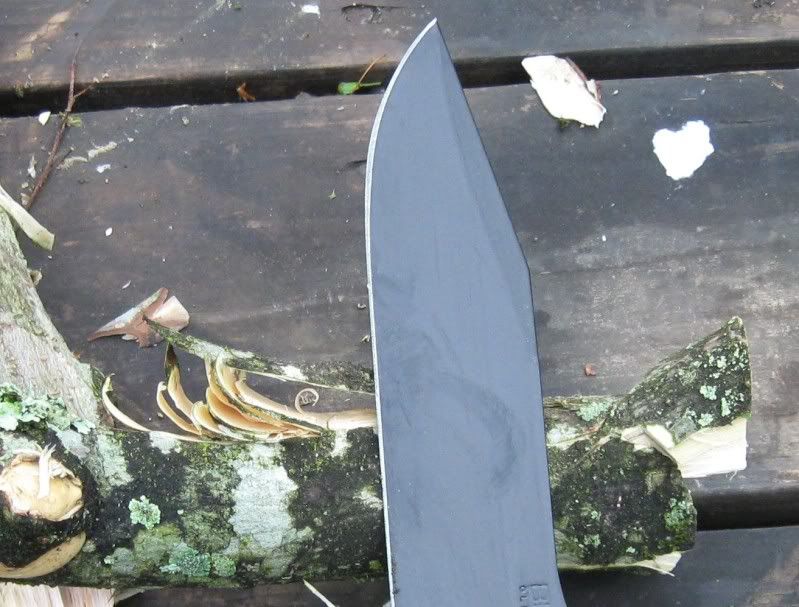
It made very quick work of chopping through a 1 1/2 inch Hickory limb

and even after that and just repeatedly whittling and chopping off larger shavings from that hickory limb…
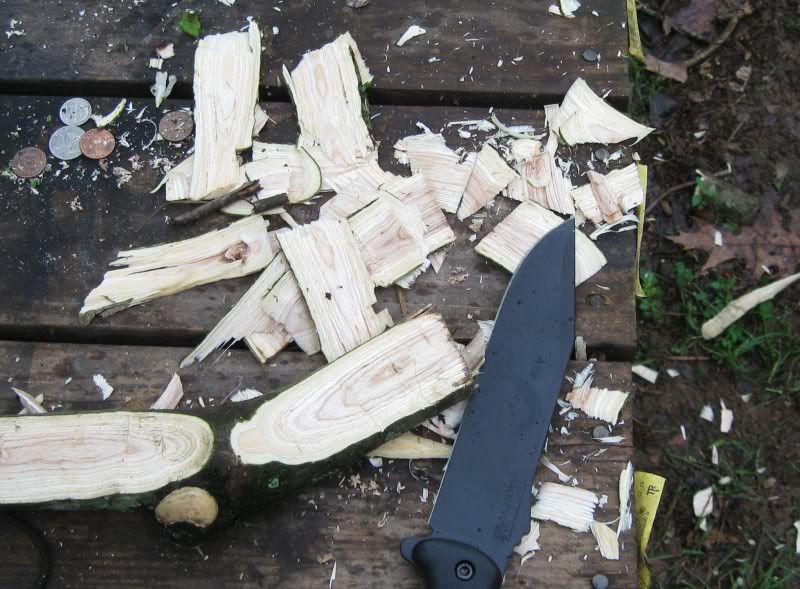
it is still shaving sharp, and I can’t wait to get it out in the field for a while and work with it some.
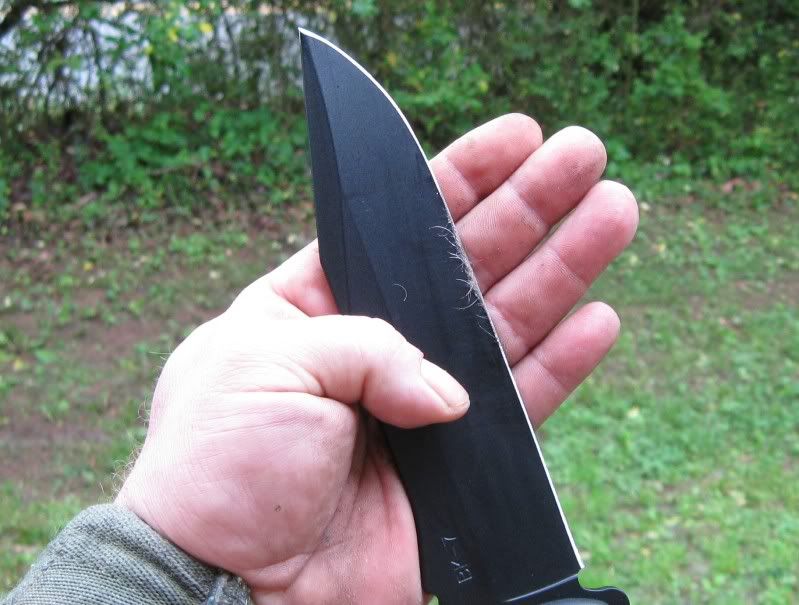
I found a nice seasoned Apple limb about five feet long and roughly three inches in diameter.

and proceeded to chop it into four pieces. It handled that very well and took about eight or ten minutes, I was just too glad to be outside to time myself. I am not sure how familiar any of you may be with Apple wood but while it isn’t the hardest wood in the world it sure isn’t the softest either once it has seasoned some.

Then it was time to see how it handled batoning. It took about six or seven licks to get through each piece, and the swedge did eventually do in the little mimosa baton I was using and for the last piece I had to use one of the pieces I had already split for a baton.


The blade handled all the chopping and splitting just fine, though there was some wear in the coating. The bolts did loosen a bit during the course of this and each one had to be tightened a turn and a quarter to a turn and a half, but in all honesty I forgot to check them for tightness out of the box. I have had to tighten the bolts on other manufacturers knives out of the box before and this is one reason I do not like ”hidden” bolts…I tend to be rough on my knives and like being able to tighten them back up.

There was no blade distortion at all afterwards


And…even after that…the knife still shaves.


This shows just how well the balance is.

A note here…. it's not just impressive only because the knife will still shave, but because of which part of the blade I shaved with....I wish there had been some hair left on my left arm to make this easier to see. If you look at these two pics and pay attention it is pretty impressive as I have yet to take a stone to this blade...haven't needed to yet. If you draw a mental line, perpendicular to the line of the spine, from where the swedge meets the spine down to the edge you can see it is still shaving at the area that has done the most work.

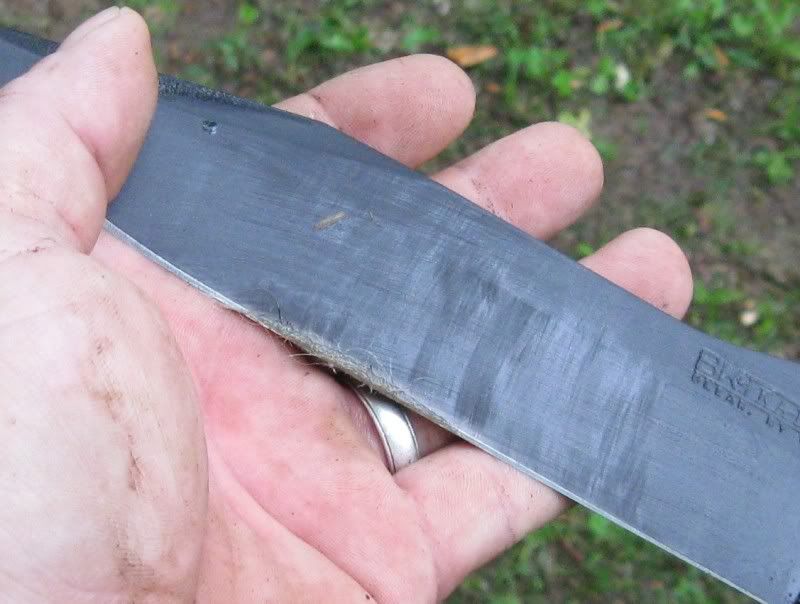
and if you take a good look at this pic..

this is what it looked like before I started chopping.
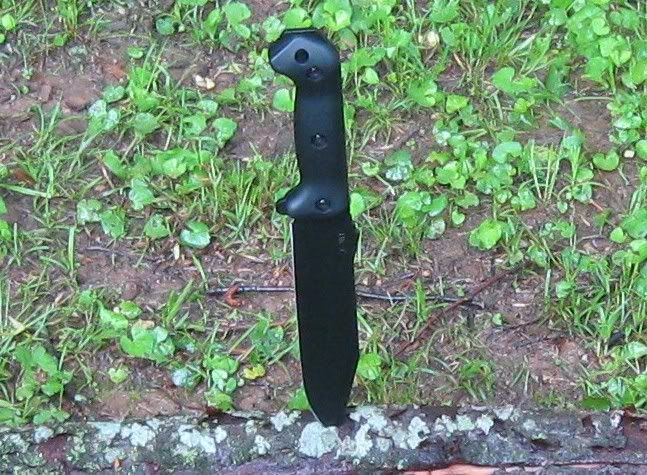
So far I am very impressed with this knife, I may set out to set up an entire primitive camp with this one as well later this summer. I hear they are going to be releasing micarta scales for it soon, I can't wait to see them.
This is the Becker BK7 made by Ka-Bar knives. It has in the sheathe with it, a little knife, the BK13. Because of all the rains I haven’t done a lot with the BK13, I will be working more with it this next weekend or perhaps in the evenings.
The BK7 has an over-all length of 12.5 inches or 31.75 cm, a blade length of just over 7 inches or roughly 18 cm tip to handle, and it is 1.62 inches or just over 4 cm at the spine area between the thumb ramp and the swedge.
This is how it comes…

It is a full tang design with the Grivory (not sure what that is yet) handle scales held on by three 5mm socket head bolts. It has a protruding tang that looks to be great for tasks such as breaking glass or plexi-glass, cracking skulls, or even batoning into ice to make a hole or gather ice to melt for water. The handle fits my hand near perfectly. I get a great grip in the conventional grip, the reverse grip, and in a rearward hold.

The sheath is made of Cordura and has multiple attachment points for carry options. It comes with a small utility blade included, and it also has a great cargo pocket that is a lot larger than most. The retention strap securely holds the knife in place and allows very little movement.




The cargo pouch is large enough that besides the BK13, which has it’s own sheath inside the pouch, it will also hold a multi-tool, a magnesium firestarter, and an Army model Swedish fire steel. I could haven gotten a few thinner things into it such as sticks of fatwood if I’d thought about it. It has an elastic webbing band around the opening to allow the pocket to expand and contract as need which also serves as a good place to tie off the firesteel and firestarter to secure them in place.



The knife comes shaving sharp…

and had no trouble whittling thin shavings.

It made very quick work of chopping through a 1 1/2 inch Hickory limb

and even after that and just repeatedly whittling and chopping off larger shavings from that hickory limb…

it is still shaving sharp, and I can’t wait to get it out in the field for a while and work with it some.

I found a nice seasoned Apple limb about five feet long and roughly three inches in diameter.

and proceeded to chop it into four pieces. It handled that very well and took about eight or ten minutes, I was just too glad to be outside to time myself. I am not sure how familiar any of you may be with Apple wood but while it isn’t the hardest wood in the world it sure isn’t the softest either once it has seasoned some.

Then it was time to see how it handled batoning. It took about six or seven licks to get through each piece, and the swedge did eventually do in the little mimosa baton I was using and for the last piece I had to use one of the pieces I had already split for a baton.


The blade handled all the chopping and splitting just fine, though there was some wear in the coating. The bolts did loosen a bit during the course of this and each one had to be tightened a turn and a quarter to a turn and a half, but in all honesty I forgot to check them for tightness out of the box. I have had to tighten the bolts on other manufacturers knives out of the box before and this is one reason I do not like ”hidden” bolts…I tend to be rough on my knives and like being able to tighten them back up.

There was no blade distortion at all afterwards


And…even after that…the knife still shaves.


This shows just how well the balance is.

A note here…. it's not just impressive only because the knife will still shave, but because of which part of the blade I shaved with....I wish there had been some hair left on my left arm to make this easier to see. If you look at these two pics and pay attention it is pretty impressive as I have yet to take a stone to this blade...haven't needed to yet. If you draw a mental line, perpendicular to the line of the spine, from where the swedge meets the spine down to the edge you can see it is still shaving at the area that has done the most work.


and if you take a good look at this pic..

this is what it looked like before I started chopping.

So far I am very impressed with this knife, I may set out to set up an entire primitive camp with this one as well later this summer. I hear they are going to be releasing micarta scales for it soon, I can't wait to see them.

